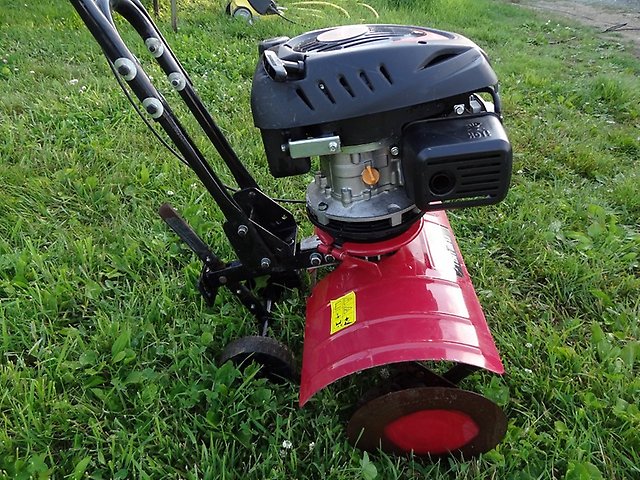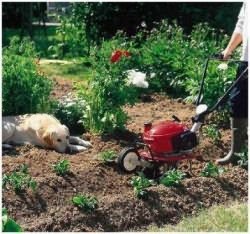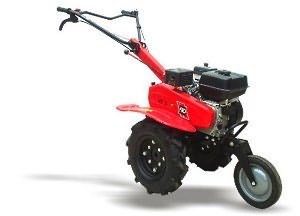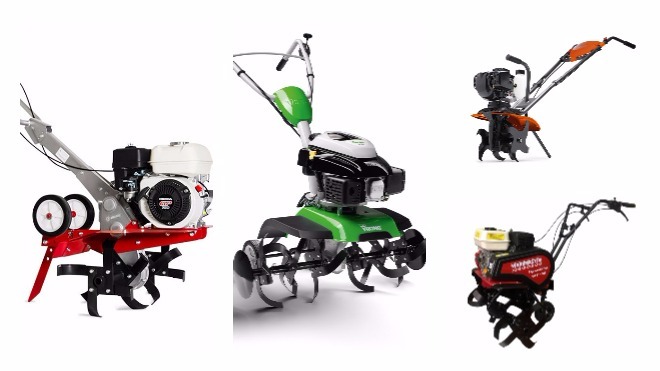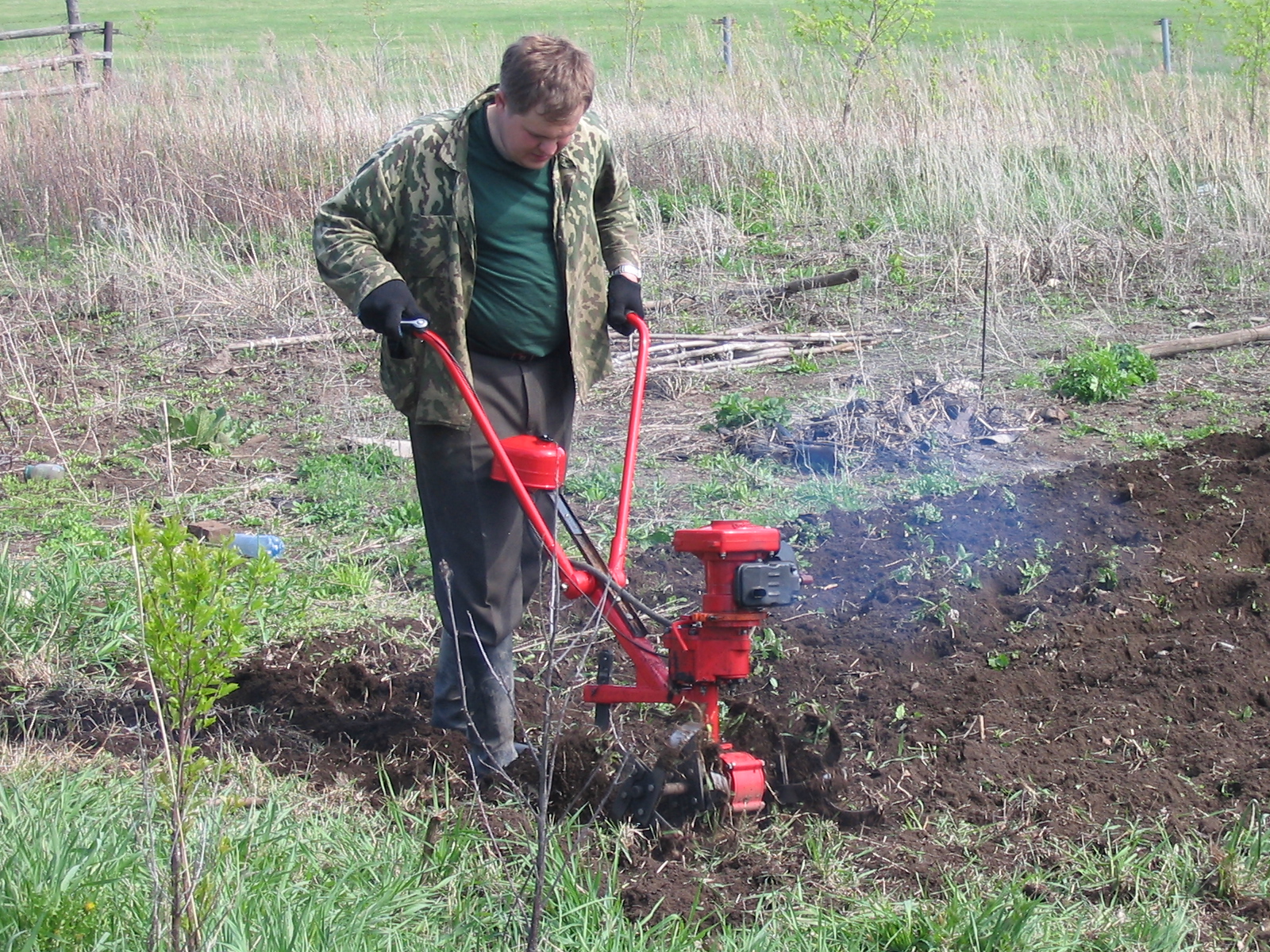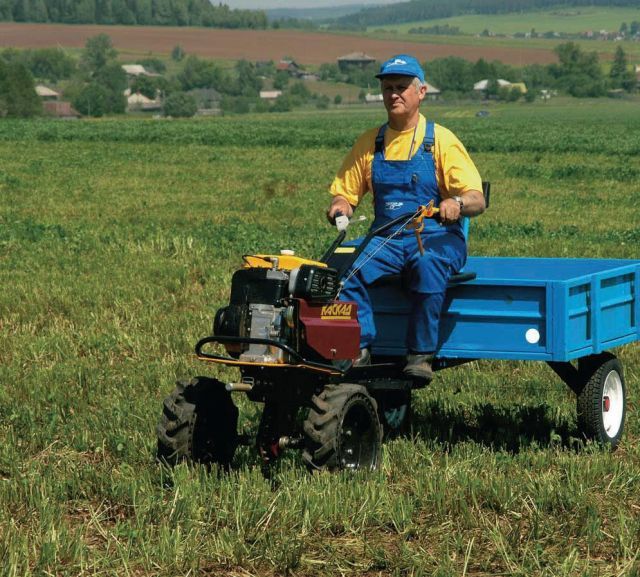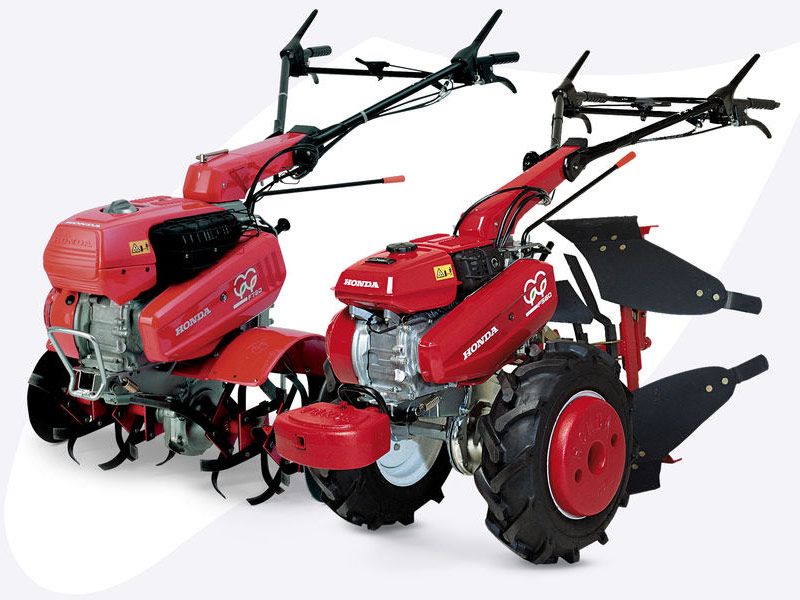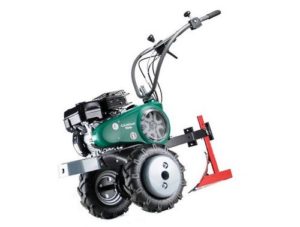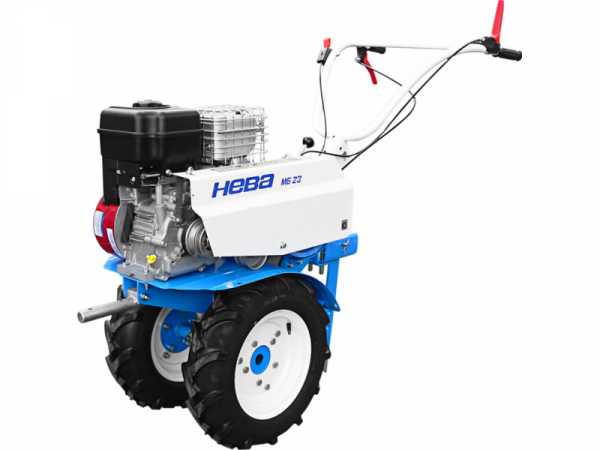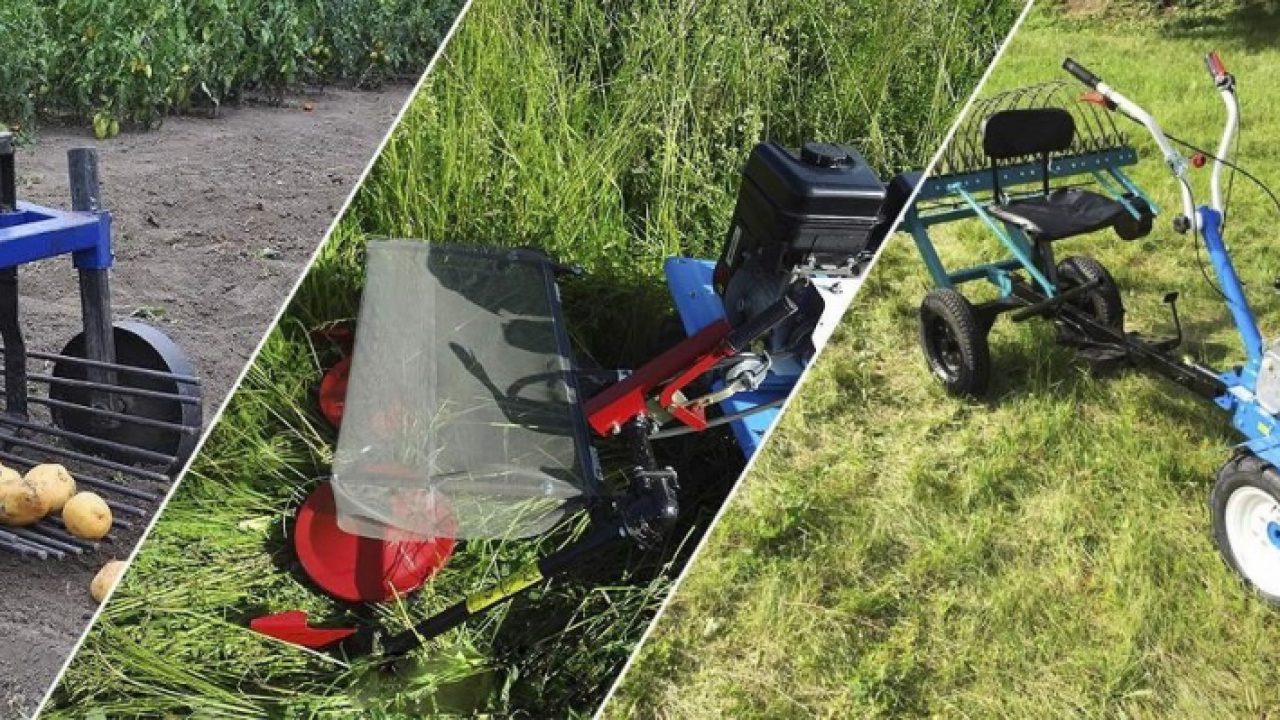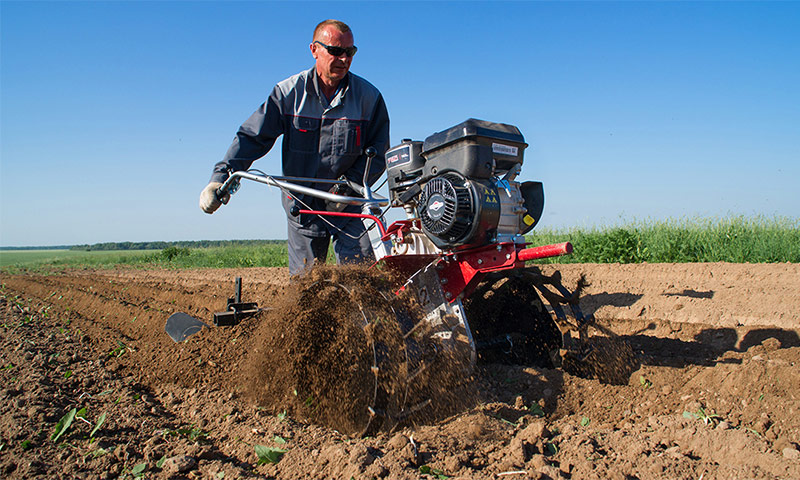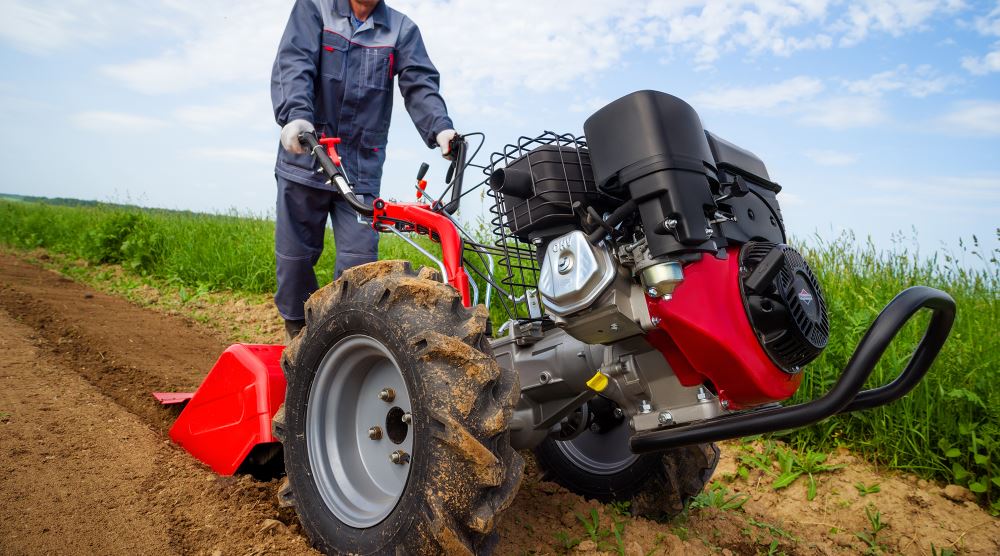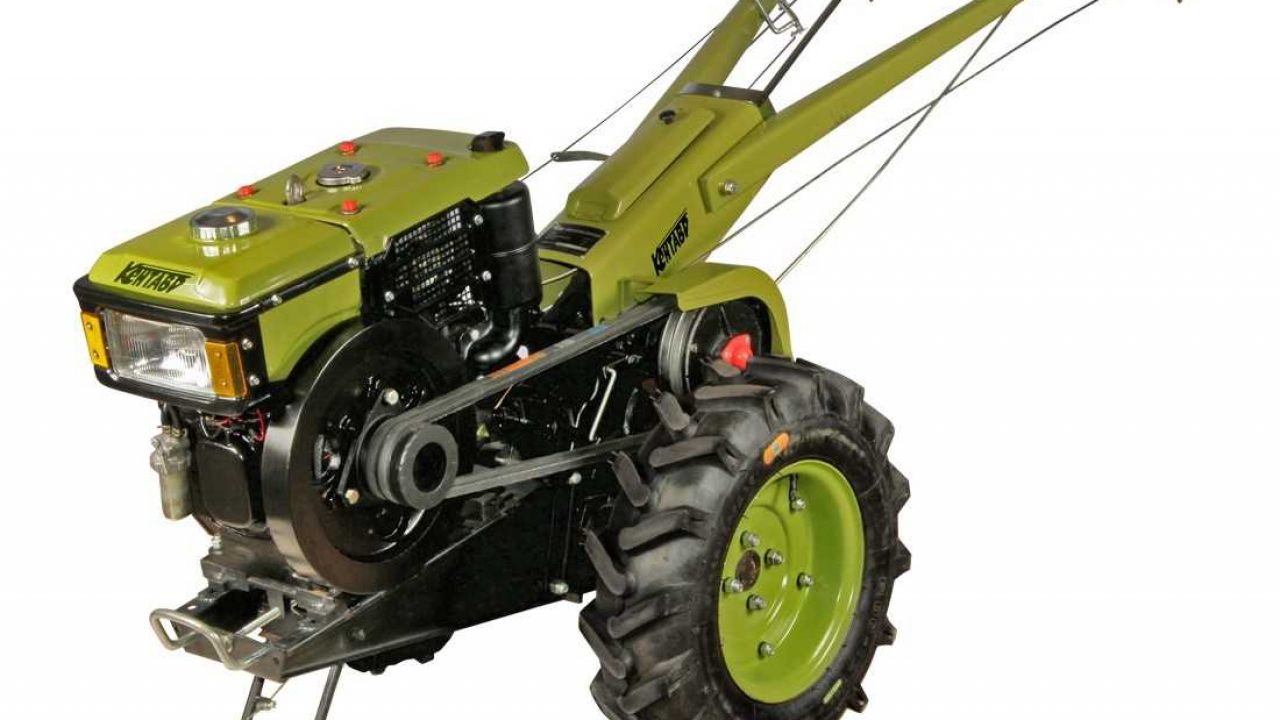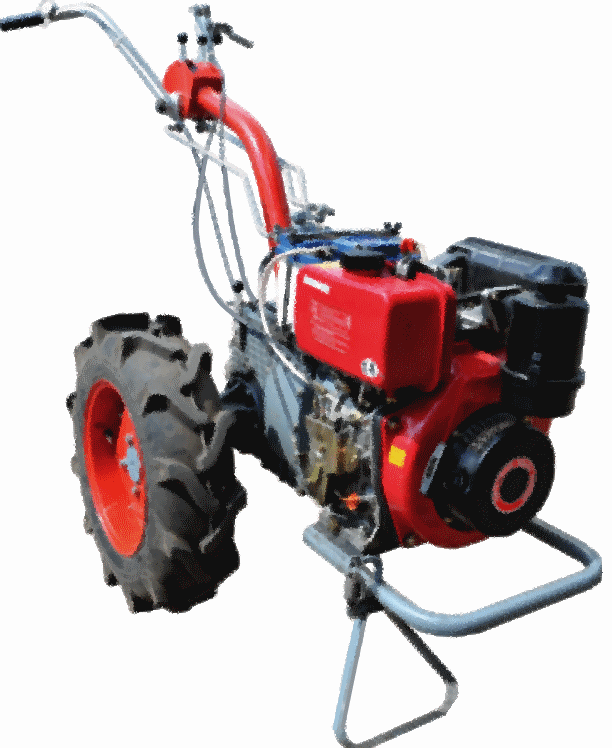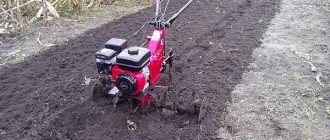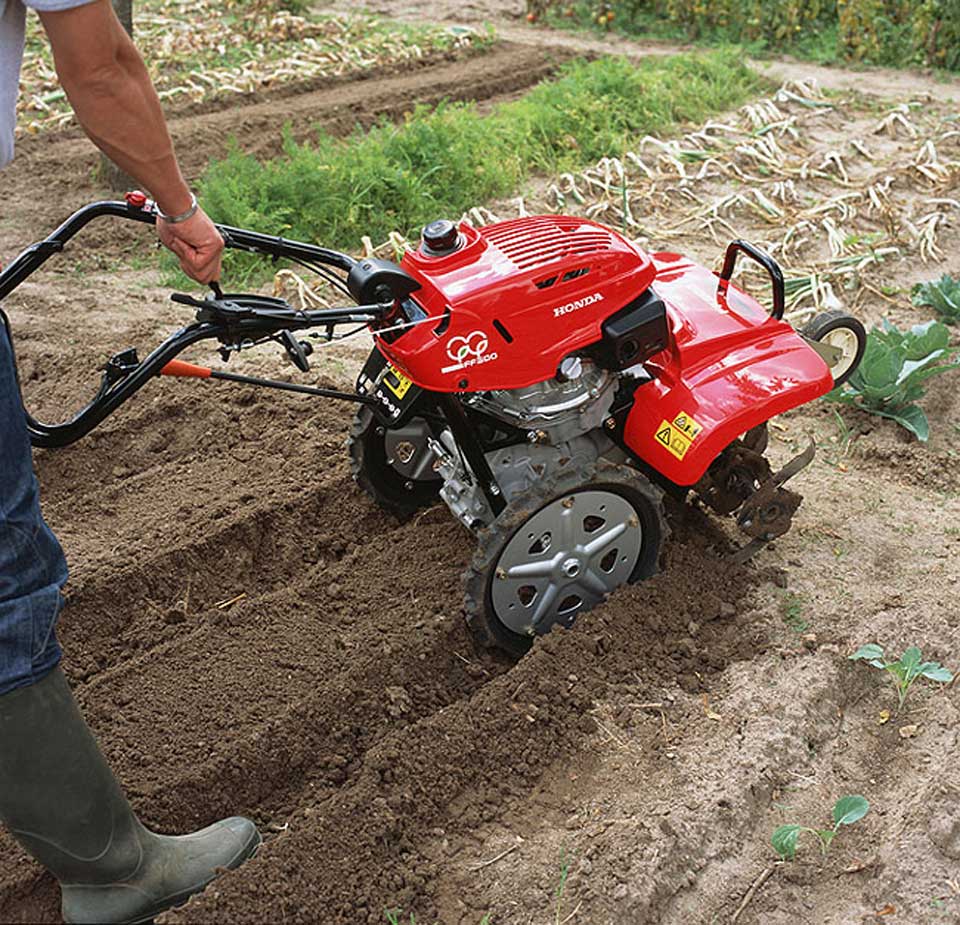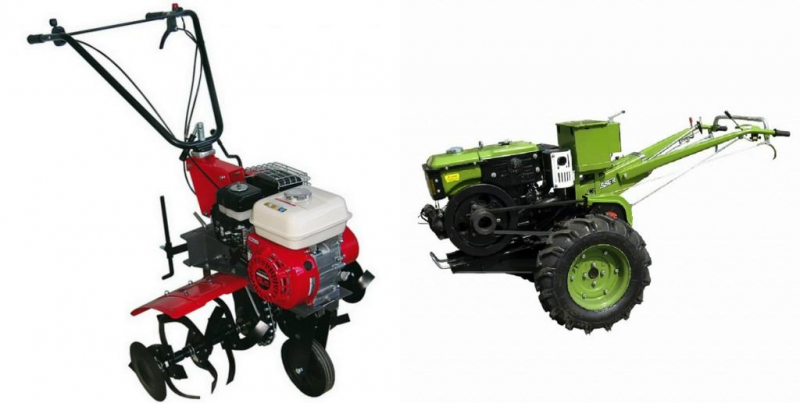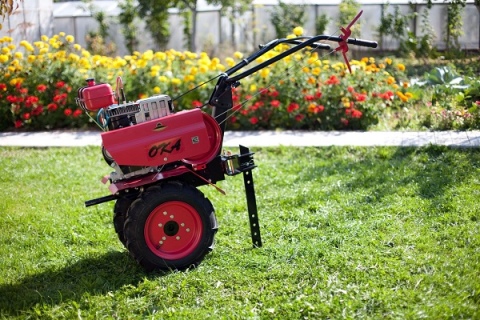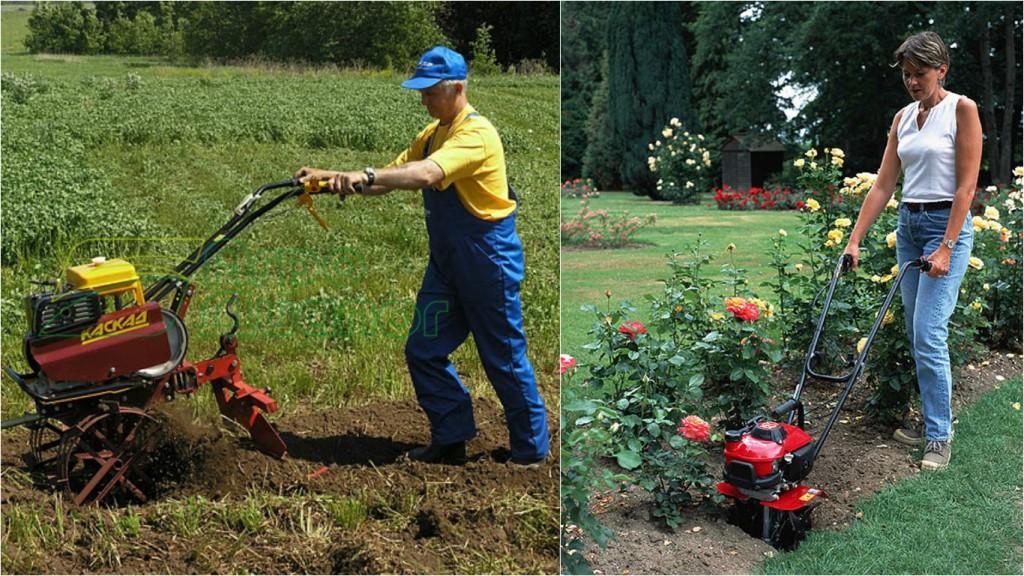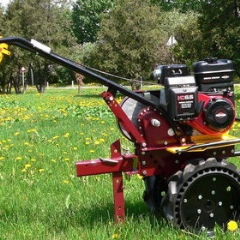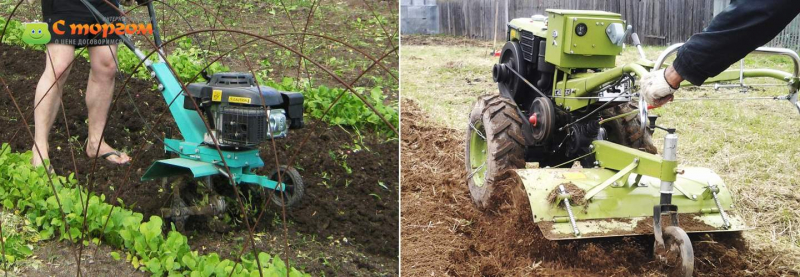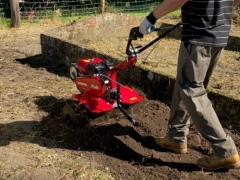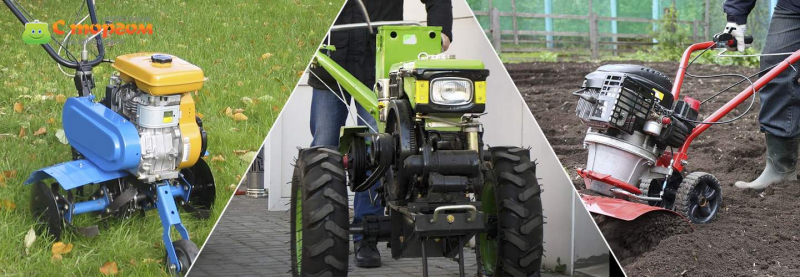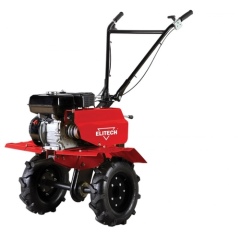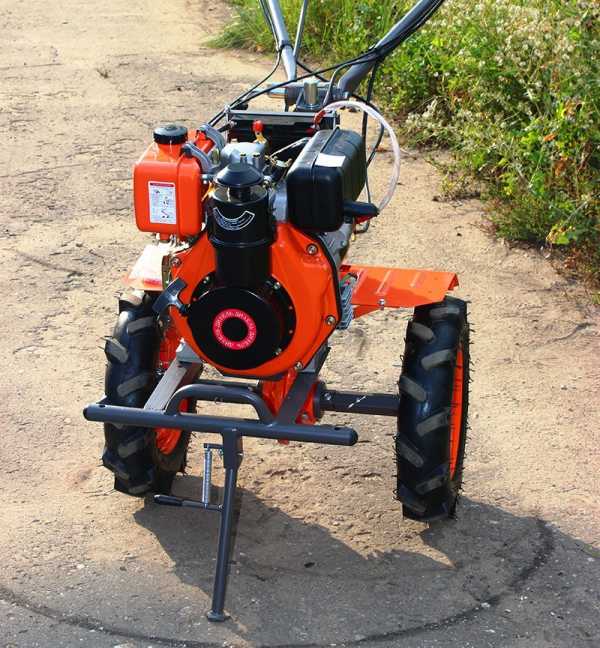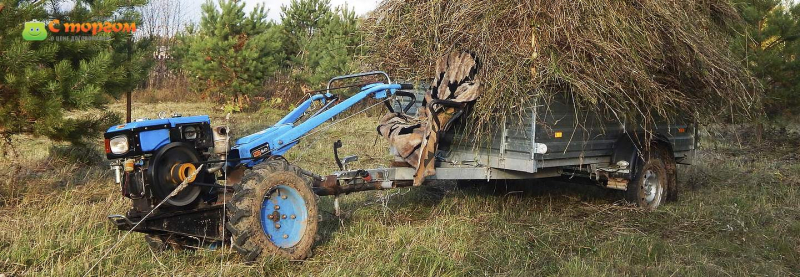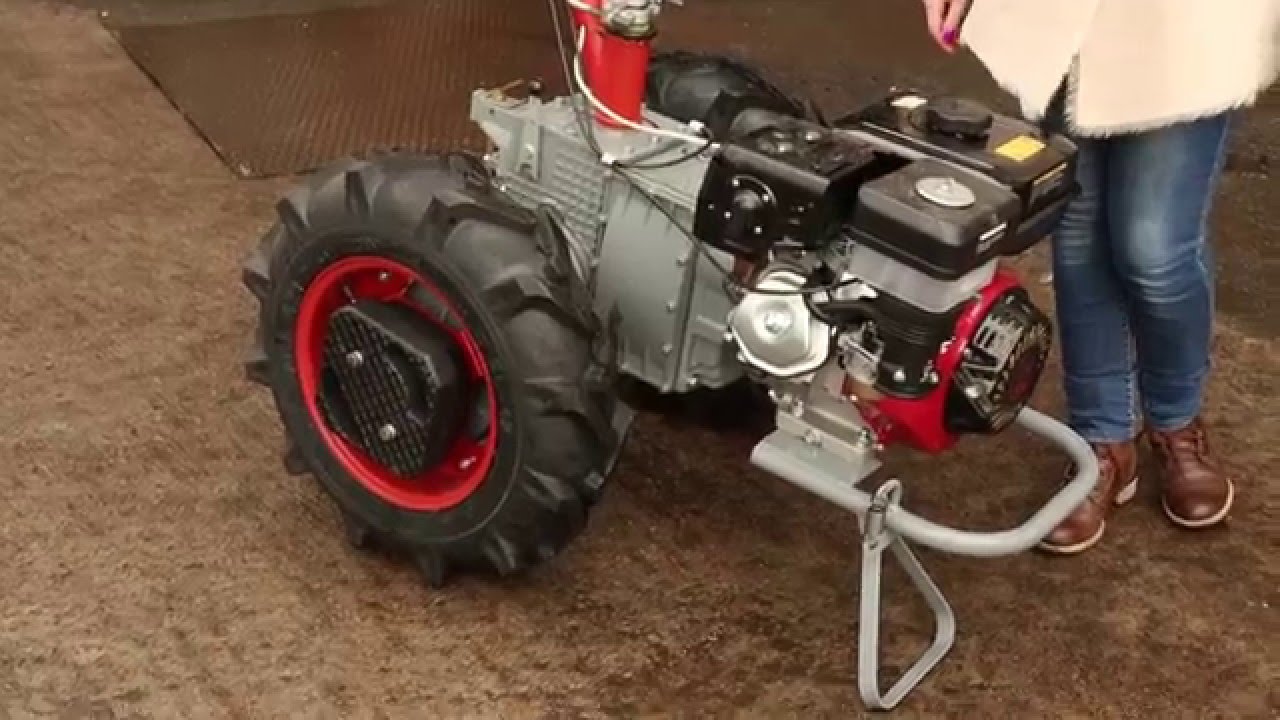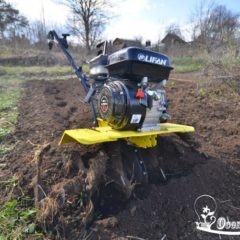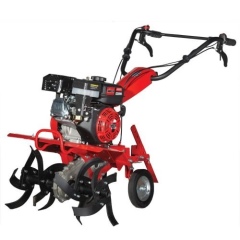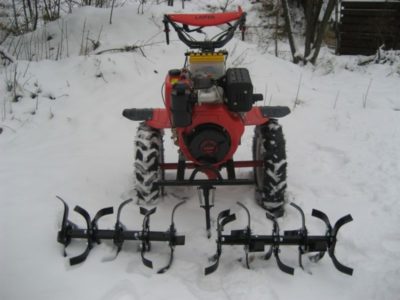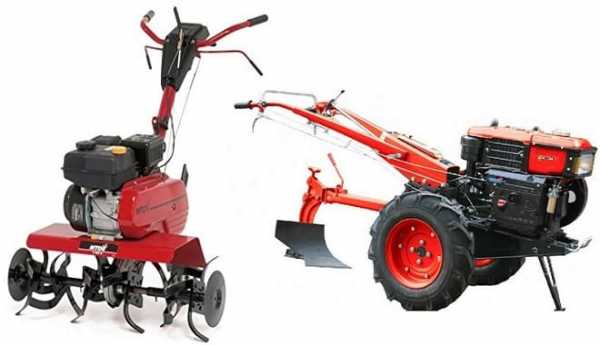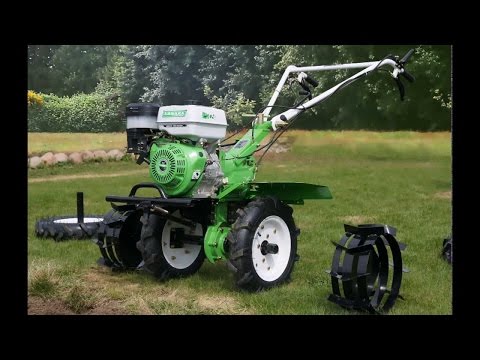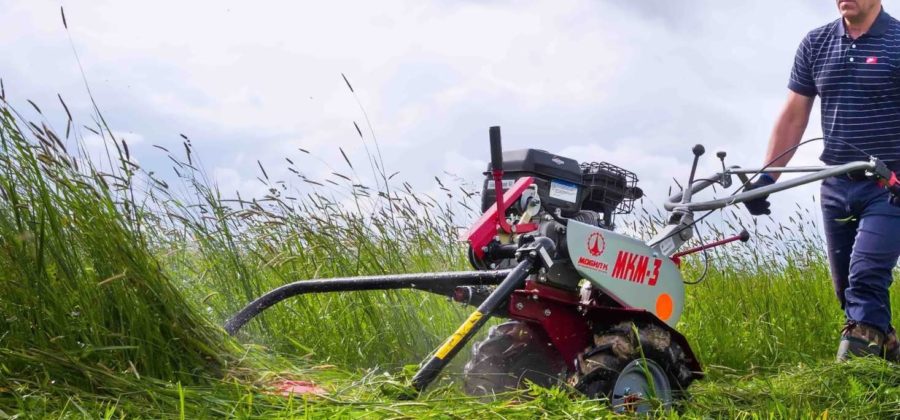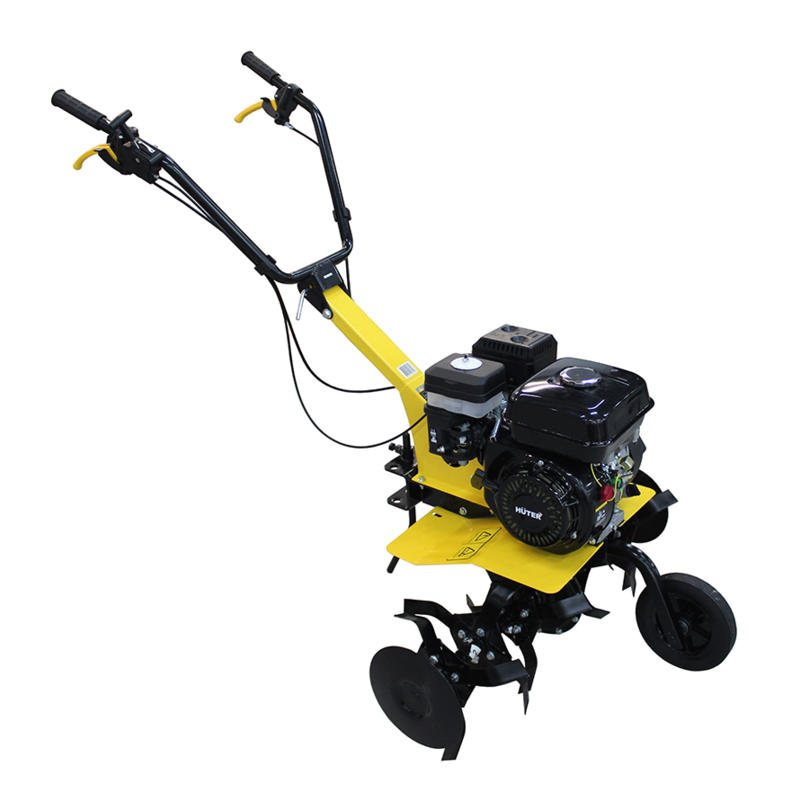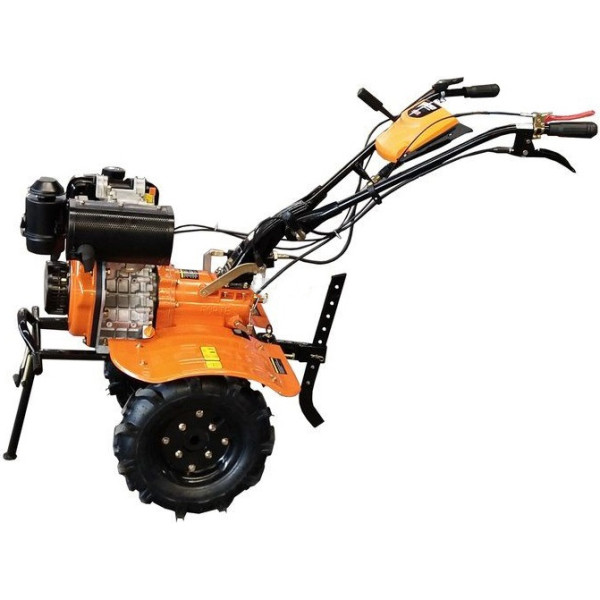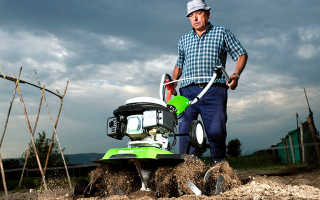Attachments for walk-behind tractor
For the main cultivation of the land, the walk-behind tractor is equipped with a plow. You can use single-furrow, double-furrow, multipurpose and reversible plows.
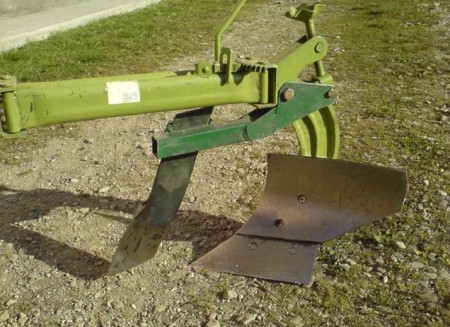
For spring processing, milling cutters for a walk-behind tractor are excellent.
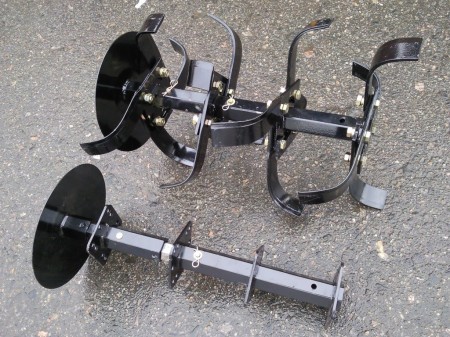
They can be installed instead of wheels or have a trailed drive from the power take-off shaft (PTO). For the same purpose, flat cutters are installed on the walk-behind tractor. To perform surface treatment of the soil, the walk-behind tractor is equipped with disc, toothed or rotary harrows.
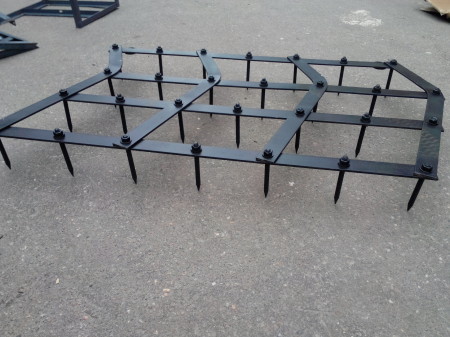
To carry out planting work, precision seeding drills are hooked to the walk-behind tractor, with the help of which you can very quickly sow crops such as buckwheat, corn, beets, peas, etc. With the help of a grain seeder, cereal crops are sown. All planters can be equipped with an additional fertilizer hopper.

A variety of chemicals are used to protect crops from pests. A walk-behind tractor equipped with a sprayer does an excellent job with spraying.
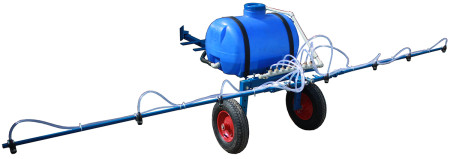
For irrigation of a field or vegetable garden, you can use a motor pump equipped with a PTO drive.
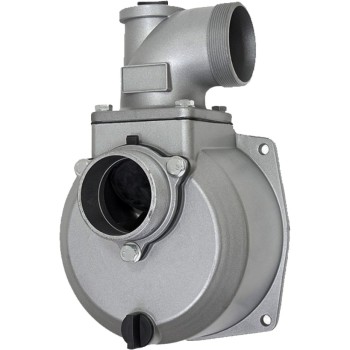
For planting potatoes on a walk-behind tractor, a potato planter is installed, hilling - hillers, for processing row spacings - hoes, for harvesting - potato diggers.

If the farm contains cattle, using a walk-behind tractor, you can harvest and transport hay, straw and other feed. For mowing hay, a mower is used, which is attached to the walk-behind tractor. The mower can be segmental and rotary.
By the way, hay can be mowed not only for livestock, but, for example, for mulch.
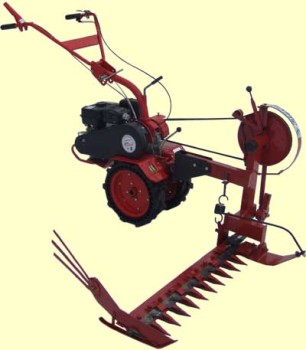
For the transportation of goods, the walk-behind tractor is equipped with a trailer. Craftsmen make trailers on their own from scrap materials, but it is easier to buy a ready-made trailer specially adapted for a walk-behind tractor. The average cost of a trailer for a walk-behind tractor (without wheels) is from 8,000 rubles.

With the help of a walk-behind tractor, you can remove snow or sweep paths using special brushes. Mouldboard shovels and rotary snow blowers are designed for snow removal.

Such exotic attachments as:
Concrete mixer.
Earth drill.
Trench digging device.
Shredder of garden waste and branches.
All of the above equipment is now available in factory design, although original designs of artisanal origin are quite common.
Motoblocks and cultivators are simply irreplaceable helpers in agriculture, because such equipment is distinguished by high functionality and practicality. For some reason, many do not see the difference between these two concepts, believing that a walk-behind tractor and a cultivator are one and the same, only the name is spelled differently. In fact, there are fundamental differences between these units of agricultural equipment, including in terms of functional features.
What volume and power should the walk-behind tractor engine have?
The vast majority of motoblocks run on a gasoline engine. According to the correspondence of engine power and the treated area, walk-behind tractors can be conditionally divided into several categories:
- With a plot size of up to 20 acres, the recommended power of the purchased walk-behind tractor is from (5 hp), and the working width is from 60 cm;
- With a plot size from 20 to 60 acres, the power of the walk-behind tractor should be at least (6 hp), and the working width is preferably 80 cm;
- With an area of more than 1 hectare, a walk-behind tractor is needed with a capacity of (8-12 hp) and a grip of 90 cm;
- With a plot size of up to 4 hectares, the power of the walk-behind tractor is at least from (12 hp) and a grip of 100 cm.
- With an area of the cultivated area over 4 hectares, you simply need a mini-tractor with a capacity of 15 liters or more. with.
Do not forget that walk-behind tractors with a power greater than the calculated one are more reliable and durable in operation. Before buying a unit, it is recommended to calculate how much area can be plowed in a certain time, or rather, how many passes to make.
Example: it is necessary to cultivate a plot of 1 hectare (100 x 100 m). The walk-behind tractor captures 60 cm, but you need to go with an overlap of about 5 centimeters - a capture of 55 cm is obtained.Therefore, dividing the side of the site (100 m) by the working width (0.55 meters), we get 182 passes with the walk-behind tractor. Multiplying 182 by 100 m, we get the path length - 18.2 km. Dividing it by the approximate speed of the walk-behind tractor of 3 km / h, we get 6 hours of work, without interruptions and refueling.
When buying a walk-behind tractor, you can not take into account the amount of fuel consumed by it, since it requires little - within 1 - 2.5 l / h. It turns out that one canister of gasoline is quite enough for a walk-behind tractor for 8-22 hours. Do not forget that for walk-behind tractors with an imported engine, better fuel is required.
Possibilities of walk-behind tractors
Let's consider what are the similarities and differences between a motor cultivator and a walk-behind tractor. Products of the first category are small in size, weight and limited functionality. With their help, you can loosen the top layer of the soil, provided there are no plant roots in it. The choice of a walk-behind tractor for a summer residence allows you to perform a wide range of works that are not limited to loosening or digging.
Having bought a walk-behind tractor for a summer residence, you can use it for the following actions:
- Plowing a suburban area for planting flowers, berries or vegetables. Processing is carried out with a mounted plow. Heavy equipment is capable of lifting virgin soil, working on heavy clay and stony soil. An inexpensive and reliable unit makes trenches up to 40 cm deep for laying various communications, building fences, laying curbs, creating a foundation pit.
- Tillage of plowed soil. To improve access to garden crops of moisture and oxygen, harrowing, cultivation and hilling of the beds are carried out. Weeds and large debris are removed along the way.
- Cultivation and cleaning of the territory. With the help of special attachments, snow removal, lawn mowing, collection of mown grass and concurrent loosening of the top layer of soil are carried out.
- Planting and collecting vegetable crops. Special attachments make it possible to plant and dig up potatoes, onions, garlic and crops. The trailed hopper is convenient to use for uniform fertilization into the ground.
- Transportation of various property. To do this, you need to choose a walk-behind tractor that has the ability to attach front and rear adapters, a cart or a winter sled. To transport a heavy trailer (up to 500 kg), the unit must have sufficient power and weight.
It is necessary to take into account all these aspects before deciding which walk-behind tractor to buy for the garden.
Consider the nuances that you need to pay attention to in order to choose the most suitable model of the unit, what indicators are needed to perform various works on the site
Specifications
In terms of power, small vehicles are divided into light modifications of 1-4 HP, medium - 4-6 HP, heavy - up to 8 HP.
The cultivator is a lightweight motorized tool weighing from 10 to 50 kg. 2-stroke internal combustion engine with a capacity of 3.5-6 hp. or electric with a power of 0.2-2 kW. Gasoline consumption is about 1 l / hour. The reducer has 2 gears - forward and backward, sometimes more. Manual start, buttons and control levers are located on the handles.
The main purpose is loosening without overturning the earth layer. It is used for processing land plots with light soils up to 15 acres.
Mini-units of 1-4 HPmilling aisles, flower beds, pruning and chopping weeds. They will also level the soil, mix fertilizer with the soil, aerate and mow the lawn. The mounted rake will scrub dry grass and the disc brush will sweep the paths. Only electric motors are used in greenhouses.
For agricultural work, cultivators of the middle class are more often used. Attachments sold separately.
During operation, the transport wheel rises, when the unit needs to be rolled back, it lowers.
Rotating cutters loosen the ground and generate traction.
Some models have metal grooved wheels with hooks. The working width (60-80 cm) and the working depth (up to 25 cm) are adjustable. A small alteration allows you to expand the functions: plowing, hilling, removing potatoes from the furrow.
The motoblock is more versatile, indispensable in the processing of a land plot with an area of over 15 acres. Units weighing 70 kg will cope even with heavy black soil and virgin soil.
It has 2 high wheels providing sufficient flotation. The driving force is a manual start 4-stroke gasoline or diesel internal combustion engine. Gasoline consumption is about 2 l / h. The difference between engines: 4-stroke is less noisy and smoky than 2-stroke.
Up to 8 speed modes, of which 2 are for reverse. Reducers: on units of lower power, worm gears, larger ones - chain and gear. Control units on the steering sticks.
Imported models are assembled from metal, including stainless, high strength parts. Plastic is present only in places that are not under stress. The length of the metal clod guards is horizontally adjustable.
For agricultural work, mini tractors are separately equipped with attachments, such as:
- plow;
- cultivator;
- harrow;
- single or double hiller (also used for cutting furrows);
- seeder;
- sprayer;
- irrigation device;
- device for planting and removing potatoes;
- wide and narrow brushes;
- snow blower;
- device for splitting firewood.
For arable work, ordinary wheels are changed to metal ones and weighting agents are added. They increase the cross-country ability of equipment, do not allow clods of earth to stick.
Units of the middle and heavy class differ in that the engine PTO shaft allows you to connect a hay and lawn mower with their own engines.
The difference between the walk-behind tractor is also that it provides a connection with a body trailer with a seat. This allows a self-propelled vehicle of 16 hp. transport fertilizers, firewood, harvested crops weighing up to 400 kg on country roads.
What a walk-behind tractor can do: the capabilities of a mini-tractor
Dreaming of a walk-behind tractor, summer residents mainly expect to use it to cultivate the land. But this technique has many more functions.
Naturally, the main functions of the walk-behind tractor are land work, and more specifically, plowing, harrowing, hilling, cutting rows, etc .:
- Plowing. They plow the land using a plow, which is hung on the unit, and powerful models are able to lift virgin soil. This function is especially useful for novice gardeners and gardeners who need to first bring the land to a normal state in order to plant something on it later. A walk-behind tractor, unlike a motor-cultivator, raises the deep layers of the soil, shoveling and mixing the soil, and thereby saturates the earth with oxygen, making it more airy. In such soil, both the level of moisture and air circulation are much better than in one dug under a shovel.
- Harrowing. Harrowing is carried out with a separate nozzle with teeth. The goal of this work is to break up the crust on the soil surface that forms when the top of the soil dries out under the sun. Due to the crust, oxygen access to the root system of garden crops is disturbed, and moisture is not retained in the soil. In addition, weeds are effectively removed by harrowing.
- Hilling.For owners who plant potatoes in their dachas (weave 4-5), the walk-behind tractor will be useful as a hiller. A special nozzle will help raise the furrows to give the tubers a better ventilation and rid them of excess moisture. Hilling is also useful for strawberries, especially if they are grown in a lowland, where increased moisture causes the berries to be damaged by gray rot.
- Digging and planting garden crops. With the help of such attachments as a potato planter and a potato digger, the walk-behind tractor will make it easier for you to plant and harvest "second bread". The volume of the bunker includes about three buckets of planting potatoes, which can be filled either by the plowman himself or by his assistant. A planter is used to plant seeds, cloves of garlic and onions.

Harrowing is carried out while the potatoes are still barely visible on the surface of the earth to help them break through the dried topsoil
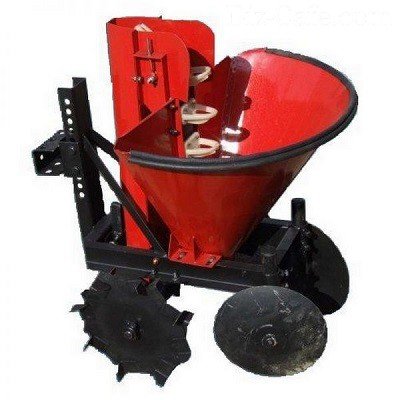
Potato planters accommodate different amounts of planting material, but the most common option is in which about 3 buckets are poured

The seeder is convenient for planting grain crops in the fall, which usually fertilize the soil and rid it of weeds. In the spring, green sprouts are piled up
In addition to earthworks, the walk-behind tractor is capable of caring for the lawn. To do this, a rotary mower is supplied with it, which cuts the grass no worse than a trimmer, capturing about a meter of lawn at once. And if you also buy an aerator nozzle, then your lawn will receive additional oxygen supply and will grow thicker.
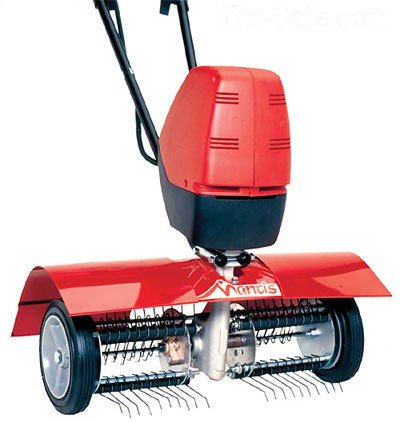
With the Lawn Rake attachment, you can collect the cut grass and at the same time stir the soil to give more oxygen to the roots
A useful addition can be called a shredder, which will grind all garden debris for composting.
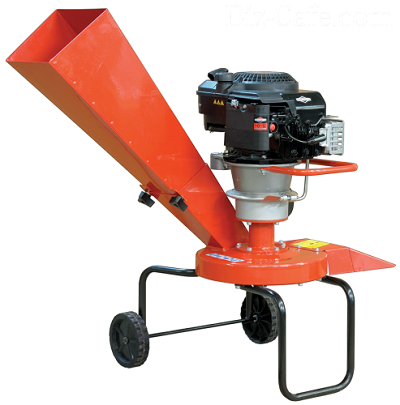
The shredder can be used to create green compost from plant waste, as well as grind cut branches of trees and shrubs
For watering the garden and flower beds, a motor pump is connected to the walk-behind tractor.
In winter, the walk-behind tractor will also not be idle. It turns into a snowblower thanks to special devices:
- brushes that clean the paths from soft, only fallen snow;
- a snow shovel with knives, which cuts and removes packed snow;
- a snow thrower, which shovels snow with blades to a depth of about 20 cm and throws it out of the path.
For complete happiness, the owner of a walk-behind tractor must also buy a trailer. Then you can proudly sit on your own equipment and drive around the garden, collecting garbage, cut branches or delivering manure, fertilizers, bags of potatoes, etc. Using a trailer, you can even bring bags of cement from the nearest hardware store or collect stones on roadside fields for the construction of a fence. Thus, you will reduce the load on your own back and arms, entrusting the transportation of goods to equipment.
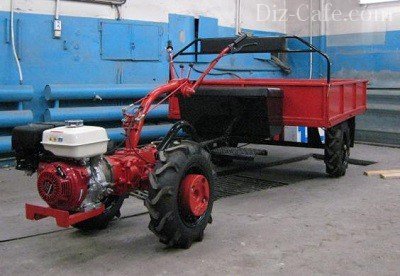
The trailer makes a full-fledged mini-tractor out of a walk-behind tractor, on which you can sit and transport various heavy loads around the site
All of the above attachments, except for the cultivator and wheels, do not come with the walk-behind tractor. They are purchased separately, taking into account the power of the equipment. And the more "horsepower" in the unit, the more functions it can perform.
Choosing between a cultivator and a walk-behind tractor
When buying equipment for processing a land plot, many gardeners and gardeners are wondering what is better to choose a cultivator or walk-behind tractor.
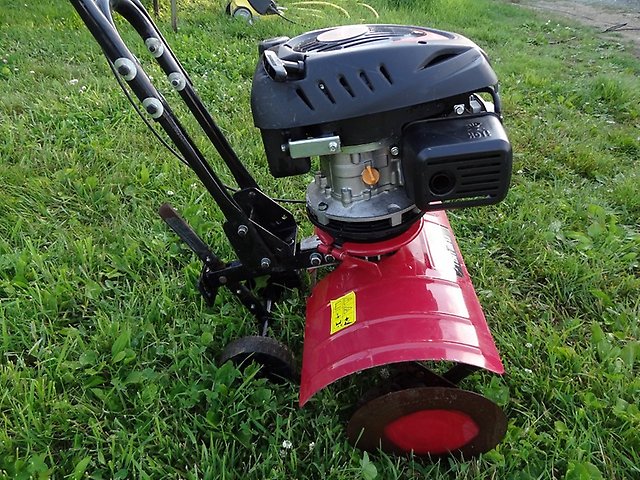
Cultivator
There is no definite answer to this question. To date, the indicated equipment is presented incredibly widely on sale, therefore the purchase should be approached wisely
There are a number of criteria that should be given special attention.
Manufacturer
The first thing that needs to be done is to decide which brand of walk-behind tractor or cultivator is worth buying.It must be a reliable brand that has not only proven itself well, but has also been present on the market for a fairly long period of time. In addition, you should select units for which the manufacturer offers a warranty, and which have a service book.
It is equally important that a service center serving the brand is located somewhere nearby.
Seller choice
Not only the manufacturer of the equipment, but also the seller of the equipment must be reliable. In this regard, the best place to buy will be a specialized outlet with experienced sellers. If a walk-behind tractor or cultivator is purchased remotely, it is best to place a purchase on the manufacturer's website or its official representative. Only in this case, you can be sure of the originality and worthy quality of the purchased goods and accessories.
Model
At this stage, the buyer will have to decide: what to choose a walk-behind tractor or a motor-cultivator. There are several criteria here:
- planned functionality of the unit;
- the size of the site on which work with equipment is planned;
- price.
On a note! For summer cottage needs and work only with soil, it is better to stop at a cultivator. For more serious farms, the model that is optimal in terms of technical parameters should be chosen among motoblocks.
There are some other characteristics that, although they do not directly affect the operation of the equipment, can significantly simplify operation. So, for example, the presence of a steering wheel will make it possible to adjust the height of the unit and its angle of inclination, the presence of a reverse gear will make it possible to re-process the most difficult areas without the need to turn the machine. In the same way, the presence of a transport wheel will greatly simplify the process of moving equipment across the site.
Some owners prefer not to put the question squarely in favor of what type of equipment to make a choice, and acquire both devices: a motor-cultivator and a walk-behind tractor. In some circumstances, this option is quite reasonable.
Practice shows that it is one thing to be able to distinguish a cultivator from a walk-behind tractor, it is quite another to choose the right technique for specific goals. In this regard, it is worth paying the maximum amount of time and attention to the selection process. If relevant experience and knowledge are not available, it will be much more advisable to seek the help of experienced pros. They will not only help you understand how the walk-behind tractor differs from the cultivator, but also choose the most suitable model.
It is interesting: Model range of motoblocks champion
How to choose the right motoblock for a summer residence: what to focus on
How to choose the best a walk-behind tractor for plowing? Which machine is more convenient to work with? To begin with, it is worth determining the working width. The larger it is, the fewer passes will be required. For a plot of less than 15 acres, a walk-behind tractor with 5-6 "horses" and a working width of 0.9 m will be enough. ... This calculation is carried out with a power reserve, because using in maximum mode will lead to the rapid destruction of the walk-behind tractor.
To loosen the soil and destroy weeds, you will need a model with a rotational speed of cutters from 220 rpm
If the main purpose of the equipment is to cultivate the earth by digging, then for a depth of 15 cm, from 150 to 180 revolutions of the cutter per minute is sufficient. To loosen and destroy weeds, you need a speed of 220 rpm.
If the unit is equipped with a reverse gear, this will greatly simplify the control of the walk-behind tractor. It will become much easier to navigate the site, especially if there is a need for frequent turns.
Tips for choosing a manufacturer
How to choose a good walk-behind tractor for the garden? What to focus on? Many are convinced that imported manufacturers are a guarantee of quality.This statement is not always true. At the same time, much depends on the operation. Any device can be broken
Therefore, you will need to pay attention to the following nuances when choosing a manufacturer:
A motoblock from a world-renowned manufacturer will be more reliable than a unit of an unknown brand
- it is worth clarifying how things are with the availability of spare parts on sale;
- how often spare parts for this equipment are purchased (if there is a demand for them, it means that the model often fails);
- it is better to read reviews about the walk-behind tractor, choose a well-known model. A unit from a well-known manufacturer is likely to be more reliable than a walk-behind tractor of an unknown brand;
- you need to find out if there is a service center nearby or if you have to send equipment to another city if necessary.
What can a walk-behind tractor do?
The mover of the walk-behind tractor is the wheels, to which the drive of the internal combustion engine is connected. Due to this, sufficiently powerful models of such devices can be used as mini tractors or even vehicles. To do this, it is enough to equip the walk-behind tractor with a special trailer.
A tiller can do a lot. On a small site, some of its capabilities will not be in demand
- Depending on the model, walk-behind tractors are equipped with various additional attachments: a plow, hillers, cutters for cutting grass, etc. This allows using a walk-behind tractor to plant and dig potatoes and other root crops, mow grass, huddle beds, mow lawns, remove snow and perform other work.
- In a walk-behind tractor of greater power, larger cutters can be used, which means that the plowing depth can reach 25-30 cm. And this is already comparable to plowing a field with a tractor.
Naturally, the more functions and capabilities the walk-behind tractor has, the more power it will have (usually within 5-20 horsepower), dimensions and weight.
Motoblocks are the best choice for medium-sized farms; on ordinary 6-10 acres of summer cottages, a motor-cultivator is more appropriate.
Cultivator selection
These devices specialize in loosening and leveling the soil. The devices do a good job of removing weeds and other unnecessary vegetation, softening the soil, mixing the soil with fertilizers. There are small cultivators that can be used in a small flower bed.
All devices are divided into several subspecies.
- Small tools. They are household and designed for loosening the earth in a small garden (up to 12 acres). The device weighs no more than 30-35 kg.
- Large-sized motor-cultivators. With their help, you can process huge areas (more than 75 acres). The average weight of the structure is 120 kg. They are universal, the manufacturer provides for additional installation of attachments. Consequently, these cultivators can handle a wide variety of tasks.
- Medium-sized tools can easily cope with an area of up to 50 acres. Approximate weight - 85 kg.
The performance of this design depends on several characteristics.
- Maximum digging width. It depends on the size of the incisors. Owners of large areas are advised to purchase an additional set of cutters. Their variety depends on the quality of the soil, since it is much easier to process a sandy surface than a clay one.
- Engine power. If you want to see good results, then choose large-sized motor cultivators.
This tool can operate on both fuel and power lines. Small gardeners prefer lightweight network devices because they are easy to use and not gasoline-dependent.
Please read the points below carefully before purchasing this item.
- Check with your dealer for the tilt angle of the device. This function will be very useful if you are the owner of a hilly area.There are products on the market that can work the soil at any angle of inclination, and there are models that stop working if they are tilted at least 25 degrees.
- If you have opted for a large-sized device, then be sure to check the possibility of changing the running mode.
- Choose attachments with a speed switch. This way you can turn a conventional cultivator into a multifunctional machine.
- If you choose between pushbutton and mechanical braking, then you should make your choice in favor of the second. In an emergency, you just need to pull the lever instead of pressing a button and waiting for the car to completely stall. It is much more efficient.
- Even if the consultant assures that you are considering absolutely identical models, do not be too lazy to look at the characteristics in order to familiarize yourself with the basic configuration of both devices.
Before you start digging up the ground, carefully inspect the entire territory of the garden for the presence of large stones or other elements that can render the incisors of the cultivator unusable. After completing work, do not leave fuel in the tank. With a slightly damp cloth, wipe the surface of the tool from dust and dirt, and lubricate the cutters with automotive oil. It is forbidden to store the structure in a damp and dirty room.
What is the difference?
At first glance, the walk-behind tractor and the cultivator are very similar to each other. Both tools are indispensable helpers for villagers. Even sometimes people mistakenly think that the walk-behind tractor and the cultivator are the same, but the difference between them is big. In fact, these are two different devices.
- A motoblock is a heavy power multifunctional agricultural equipment with an internal combustion engine with a capacity of 4 HP and above, equipped with a power take-off pulley or a shaft. Moves independently. With the purchase of additional weights, he does all the agricultural work. As well as cleaning and removal of snow and debris. Replacing fixtures is simple and not time-consuming.
- The cultivator is a power equipment with a gasoline engine with a capacity of one to seven liters. with. Moves forward by rotating the cutter. Loosening of the soil is shallow. With attachments between the rows, it fights weeds, hilling and harvesting root crops.
- Power ratings differ significantly. The walk-behind tractor is in the lead in comparison with the cultivator.
- On the cultivated area, quick-to-do not keep up with the walk-behind tractor. He can only cultivate up to 20 acres. The mini tractor will successfully cope with a small farm.
- When choosing a machine, you need to know the cultivation parameters. The cultivator has a grip from 15 cm to 90 cm, a depth of no more than 12 cm.A tiller here, too, is in the first positions - a grip of up to 130 cm, a depth of up to 25 cm.
- The speed of movement is an important indicator. The mini tractor has up to six forward speeds and up to three reverse speeds. Plowing speed up to 1 km / h, cargo transportation speed up to 15 km / h. The cultivator carries out the movement due to the turnover of the cutters. Designed for movement in small areas at low speed.
- Managing a walk-behind tractor requires certain skills. Any adult man can handle a cultivator.
- In terms of size, the cultivators are compact, lightweight, and mini-tractors have impressive dimensions and great weight.
- The walk-behind tractor is much more powerful than the cultivator, but also more "voracious".
When buying equipment, you need to remember that the purpose of quick-digging is to combat weeds between rows, and the walk-behind tractor is more perfect, and the ability to change modules makes this technique universal.


